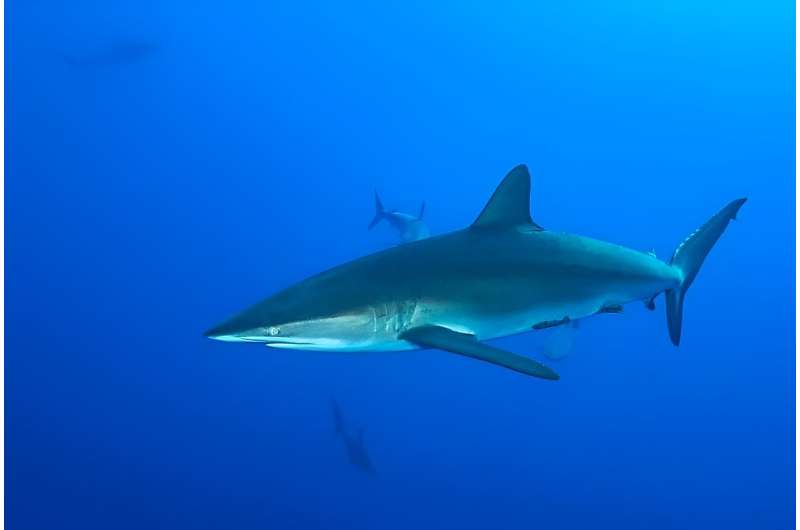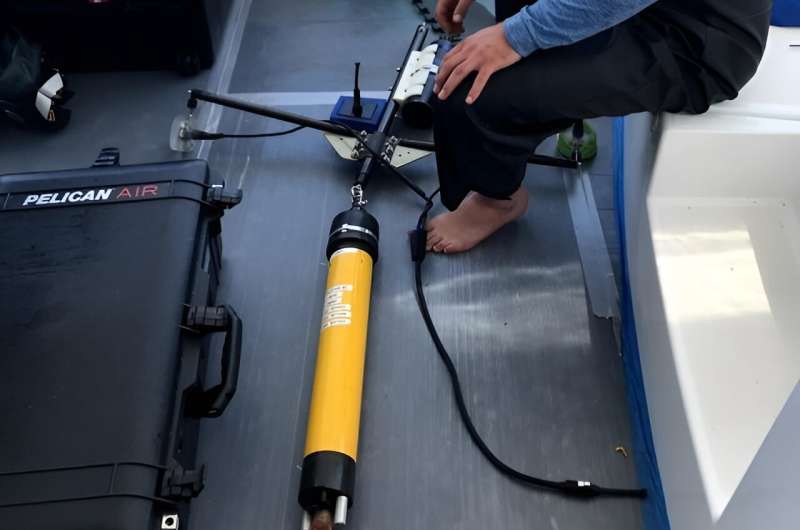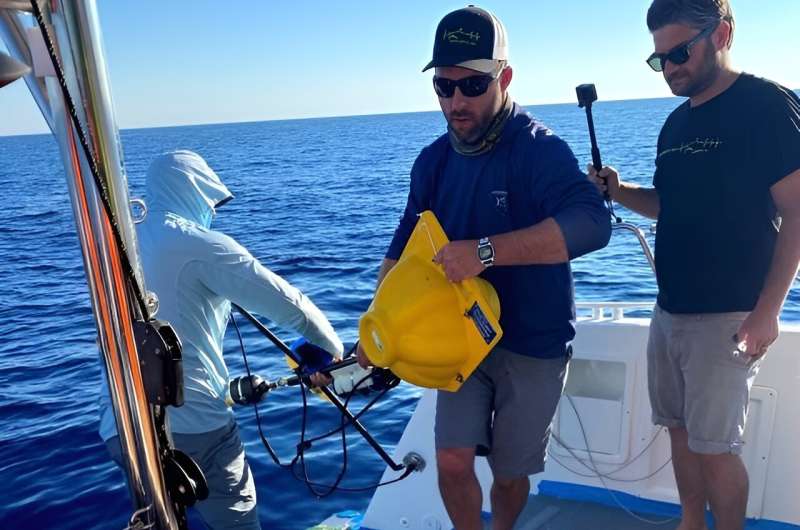This article has been reviewed according to Science X's editorial process and policies. Editors have highlighted the following attributes while ensuring the content's credibility:
fact-checked
peer-reviewed publication
trusted source
proofread
Researchers develop model system to assess the efficacy of shark sanctuaries

Virginia Tech researchers in the College of Natural Resources and Environment are assessing the efficacy of shark sanctuaries by developing a modeling system that utilizes publicly accessible fishing data to determine shark catch and mortality rates. Published in the journal Science Advances, their findings represent an important step in utilizing data science to tackle oceanic conservation challenges.
"Shark sanctuaries are coastal areas designated by countries as places where the targeted fishing of sharks is prohibited," said Brendan Shea, a Ph.D. student in the Department of Fish and Wildlife Conservation and the paper's lead author. "My initial ambition was to use publicly available data to look at these sanctuaries from a high-level perspective, understanding how much fishing is occurring in these areas and what the potential risks are to sharks."
That goal led Shea to collaborate with Assistant Professor Francesco Ferretti, who encouraged Shea to take the research further. Ferretti suggested that shark sanctuary data could be utilized to develop a model that could provide numbers on how many sharks were being caught from fishing in protected waters, and how many will die from the experience.
"Unlike some other marine protected areas that ban commercial fishing entirely, shark sanctuaries still allow fishing to occur, and anytime you have fishing, you're going to catch sharks," said Shea. "The stress of being caught and released means that you're going to have some unintended mortalities of sharks in these sanctuaries, even if all sharks are released."

Using fisheries data to better model conservation challenges
To estimate catch and mortality rates for oceanic shark species, the research team utilized positioning data of fishing vessels from Global Fishing Watch, an open-access website that provides a global view of commercial fishing activities around the world to advance ocean governance. The group also collected publicly available data from regional fisheries management organizations to create a model that would estimate the impacts of longline fishing on seven species of open-ocean sharks.
The team's models estimate that 286,820 large sharks were caught within the eight sanctuary areas the group focused on in 2019, with 109,729 of those sharks dying as a result of the stress of capture. The researchers learned that blue and silky sharks represented more than 70% of the sharks caught, with thresher and oceanic whitetip sharks also experiencing sizable capture and mortality numbers.
"There is always a discussion about the conservation impact that marine protected areas and shark sanctuaries have on species populations," said Ferretti, an affiliate of the Global Change Center and the Center for Coastal Studies. "What this paper does, for the first time, is provide clear numbers on how many sharks are being caught and how many are dying as a result of fishing in these waters."
Shea, who collaborated with research partner Beneath the Waves, a nonprofit marine research institution, said that utilizing multiple streams of data to tackle a specific conservation question marks an important stride forward in fisheries research.
"We've traditionally relied on a lot of old-fashioned measures in fisheries management, such as direct observations and having people sit on boats with log books to monitor catches," said Shea. "Now we're in an age where absolutely everything has a data point attached to it all the time. We need to start trying to leverage all of these data streams into telling a clearer story about what's happening in our oceans."
Ferretti echoes that research like this marks an important inroad toward considering new approaches to understanding fish populations, as well as the impacts that humans have on open oceans species.
"This is an illustration of how we're transitioning from fisheries science to fisheries data science," said Ferretti. "In the age of big data, we've demonstrated that we can do applied conservation and management research, and it is work that is applicable to many other aspects of fisheries management at large and even global scales."

Next steps in merging data with conservation research
Shea's next research efforts will continue to utilize data. He aims to better understand the home ranges of large marine predators, to more accurately assess the benefits of conservation strategies such as shark sanctuaries.
"For spatial protections to be impactful in conserving large pelagic species, we need to better understand their home ranges, or how much space they need and use throughout their lifetimes," said Shea. "This is not well-studied for many wide-ranging species, and the knowledge gained will build on our initial work to better evaluate the conservation and management roles of marine protected areas."
More information: Brendan D. Shea et al, Quantifying longline bycatch mortality for pelagic sharks in western Pacific shark sanctuaries, Science Advances (2023). DOI: 10.1126/sciadv.adg3527
Journal information: Science Advances
Provided by Virginia Tech



















